Niya Ruins
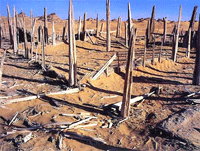 Niya Ruins is at the lower reach of the Niya River, 150 kilometer north of the Minfeng county. The ruins were buried deep in the Taklimakan Desert, the largest desert in China. Niya was the remains of the Jingjue Kingdom, one of the 36 kingdoms in the Western Region, which existing from the Han Dynasty to the Jin Dynasty. The flourishing oasis was of significance importance on the Silk Road. Niya Ruins is at the lower reach of the Niya River, 150 kilometer north of the Minfeng county. The ruins were buried deep in the Taklimakan Desert, the largest desert in China. Niya was the remains of the Jingjue Kingdom, one of the 36 kingdoms in the Western Region, which existing from the Han Dynasty to the Jin Dynasty. The flourishing oasis was of significance importance on the Silk Road.
The Jingjue Kingdom was nourished by the Niya River, traces of whose course are still visible today. The fertile green cultivated land and the splendid culture waned into history soon after residents here used out the last drip of the precious water here.
In this strip-like city ruins, remains of temples, houses tombs scatter around everywhere. Farmlands, forests, irrigation networks are faintly visible.
The city is believed to be divided into two sections by the Niya River. The south part was the rich community while the poor resided in the north part. Every housed was attached with a orchard, coops and a reservoir. In the middle of the ruins lie remnants of the earth pagoda.
Jingjue Kingdom was located at the center of the Taklimakan Desert and the opening of the Silk Road was the major factor for its rise. The weary trade incoming caravans stopped by Jingjue and exchanged their merchants with camels to convey their merchandise into Inner province of China.
JIngjue’s economical and cultural prosperity had never improved its poor natural condition and hash climate feature. Hemmed in by the fatal sand desert, shortage of water and the shifting sands threatened JIngjue people all the time. Inhabitants once tried hard to fight against the desert by planting large amount of forest. Laws were applied to protect the forests and water.
Niya was vanished during the Jin Dynasty. Archeologist and historians discovered very little clue on how it was abandoned.
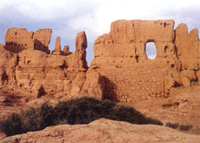 Mallikurwatur Ancient City Mallikurwatur Ancient City
Otherwise known as the Mallikurwatur Ruins, the site is at the fringe of the Taklimakan Desert, some 17 kilometers west of the Luopu county. Mallikurwarur was Uygur language, which means White Castle.
Majority of the ruins are buried underground in the deep sands. The only trace of the city is a broken section of a city wall in the north. The wall took shape of an arc and is 100 meters long, 2.60 meters high and 1.6 meters thick. It was built with adobes of different sizes. It is very interesting that all the adobes were carved with strange symbols and archeologists have collected many such seemingly queer signs but so far has no body figured out the meanings.
Ancient stone tools, pottery pieces, coins, beads litter everywhere around the city wall.
Over this century, the ruins have seen groups of explorers and large amount of relic has been collected. However, as long as so far, archeologists are still unable to sketch out details of this mystical ancient city.
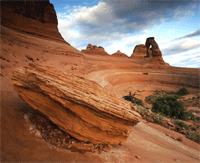 Rewake Buddha Temple Ruins Rewake Buddha Temple Ruins
40 kilometers away from the Yulong kashi Town, Rewake Ruins is braced by a vast wide desert. Rewake is Uygur language which means pavilions. The complex contains a big pagoda inside a courtyard and some attached buildings outside. Outside walls were decorated with colored murals and clay figurines and Buddhist sculptures litter around everywhere. From the left remnants, experts believe that of those statues, the largest one is around 3 meters tall. Each section of the wall measures 45 meters, which demonstrates the ruins’ grand looks.
Historical evidences show that the complex was built before the Tang Dynasty over 1,000 years but very little was gained when was it destroyed and then abandoned. However, remaining there informs us that these ruins have stood through rains and wind over hundreds of years.
The site recognized the suzerainty of Yutian Kingdom, one of the 36 kingdoms in the Western Region. The ruins are of great historic importance for archeologists and historians to research history, culture of the mysterious Yutian Kingdom.
Ancient Fig Tree
 The Ancient Fig Tree located about 22 kilometers away from Hotan county, is a major tourist destination. The tree has a history of nearly 300 hundred years which is very rare and valuable worldwide. The Ancient Fig Tree located about 22 kilometers away from Hotan county, is a major tourist destination. The tree has a history of nearly 300 hundred years which is very rare and valuable worldwide.
The fig tree like an huge and unique green mushroom, covers
about 0.1 hectares. Its branches spread over in all directions
and its roots intertwine. The tree is verdant and vibrant through
most time of the year. It can yield up to 20,000 fruits annually.
Visitors traveling here from Jane to October are in for some
special surprises. Choose a big and fresh one when they come
into season. Fig fruits are renowned as magical fruits with
its special medical effect to prolong life and strengthen body.
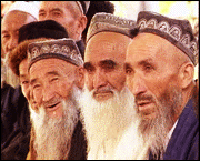 Hotan Aged People Hotan Aged People
When traveling around Hotan, you will find a very interesting phenomenon, that’s there are many elderly people who are over 100 years ago. Hotan was recognized as one of the four long-life regions by the International Medical Society in 1985. According to a survey recently, there are 114 peopled aged over 100 years, 112 of whom are Uygur and the eldest one is 135 years ago.
Researchers have find that the locals’ life habits, natural environments have jointly created such a wonder.
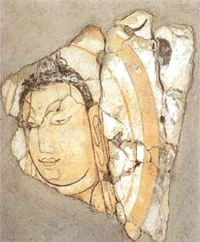 Hotan Kaladun Ruins Hotan Kaladun Ruins
Kaladun Ruins around 440 kilometers away from Hotan City is at a wild, harsh vast desert, in the low reach of the Keliya River.
Kaladun means Black Sand Duns. The only visible structure left today is a broken section of the city’s massive wall. Archeologist once unearthed pottery pieces, fragmentary felts, Han coins here.
Kaladun city belonged to the Yutian Kingdoms.
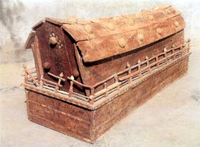 Buzak
Tombs Buzak
Tombs
Buzake Tombs is at the south fringe of the Buzake Oasis. The cemetery is 800 meters long and 400 meters wide. These tombs buried the citizens of the ancient Yutian Kingdom. A patch of well preserved colored coffins were excavated from this site and inside the dead were dressed with flamboyant silk clothes. The tombs can be traced back to Five Kingdoms Period over 1,000 years ago. |